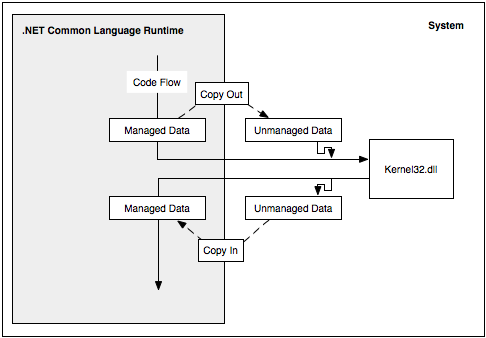I'm a Cocoa developer first and foremost, but for the next few months I'll be moonlighting as a C#.NET developer, writing version 5.0 of my Music Rescue application from scratch. I actually have version 4.0 in Visual Basic.NET, but, you know — Visual Basic is for chumps.
Writing in C#.NET is an… interesting experience for someone used to Objective-C. This series of posts will discuss .NET from the perspective of a Cocoa developer — what's good, bad, and just different.
.NET is implemented independently from the OS, which can be a double-edged sword. On the plus side, you get all the features of the new framework on Windows XP (wouldn't you love Core Animation on 10.1?), but on the negative side, the ritzy new features in Windows Vista and 7 (such as Glass or in-taskbar progress bars) aren't included in all but the latest .NET versions (not the versions that ship with each OS) — you have to Interop down to Win32 to use them. While Microsoft does provide wrapper classes for these features as a separate download, it does dull the experience in what's supposed to be a cutting edge, modern framework.
The CLR
This time, I'm talking about a huge part of .NET — the Common Language Runtime, or CLR. The CLR is similar to Java's VM in that .NET apps, whether they're written in C#, Visual Basic or something else all get compiled down to a common bytecode that is then translated to the target CPU at runtime. This means that all .NET applications are kept in their own little managed, garbage collected bubble, safe from the atrocity that is the Win32 API.
Microsoft have used this opportunity to create an interesting set of security features — much like Java, your application can have its access to the disk and various other system resources limited based on settings made by an administrator. Normally, this isn't a problem — however, if you're not very defensive about what you're doing with these resources, expect to get a ton of crash reports the first time a user tries to run your application from a network mount.
Finally, compared to the Objective-C runtime, .NET's CLR is very static. No sending messages to nil objects and no swizzling or any of that cool stuff. Want to dynamically swap a method implementation with another one to, say, use your own custom implementation of KVO on other objects? Nope, not gonna happen.
Talking With The Rest Of The System
Unfortunately, even with .NET 4.0 (which is currently at Release Candidate status), using .NET is like being back in the Mac OS X 10.4 days where you had to dip down into Carbon all too often — you won't be going long until you have to make a call through to Win32. Fortunately, .NET includes the System.Interop namespace, letting you call through to standard DLLs with ease. However, this does expose you to some of the peculiarities of Win32 - for example, to register for notifications on device changes, you need a window handle — something I didn't have to hand in my DLL, and I ended up having to create an invisible window to accomplish this.
Interop becomes even more difficult when you need to pass pointers around. Since the CLR is an opaque lump of memory to the rest of the system, you can't pass a pointer to something outside of the runtime. When passing "stack" variables directly, Interop does this for you, but if the call will be, say, filling a struct, the process is a little more involved:
• Allocate the struct in your managed code.
• Using System.Interop, copy the chunk of memory over to the unmanaged memory space where the rest of the system can get at it, which gives you a pointer in return.
• Call the Win32 API you want, passing the given pointer as normal.
• Using System.Interop, copy the chunk of memory back into the managed memory space where you can access it from the CLR.
• You're done! Since the unmanaged memory space isn't garbage collected, don't forget to deallocate the memory space you copied to.
Here's a nice diagram of what's going on:

Or, in terms of code:
Objective-C
struct MyStruct myThing;
ASystemCall(&myThing);C#/.NET
MyStruct &myThing;
int inputSize = Marshal.SizeOf(GetType(MyStruct));
IntPtr ptr = Marshal.AllocHGlobal(inputSize); // Allocate some memory
Marshal.StructureToPtr(myThing, ptr, true); // Copy our struct into it
ASystemCall(ptr); // Call the method
myThing = (myThing)Marshal.PtrToStructure(ptr, GetType(MyStruct)); // Copy the structure back
Marshal.DestroyStructure(ptr, GetType(MyStruct)); // Deallocate the unmanaged memoryIs It Worth It?
Even though the CLR does impose some serious limitations at times, from the pain-in-the-ass interop with the rest of the system and the limitations imposed on your code when you're not running from a "trusted" location, the .NET CLR is pretty awesome. For the most part, you're shielded from Win32 and its problems (mainly due to the fact that Win32 is decades old and full of cruft and old conventions), and Microsoft have really done a great job in starting from scratch to build a modern object-oriented framework.
Next time: Wot, no MVC?